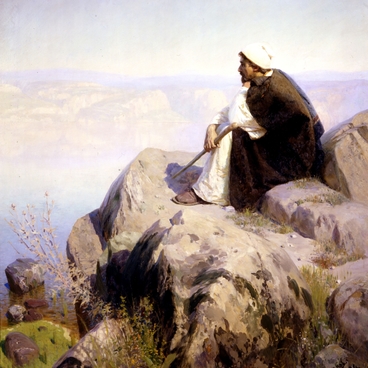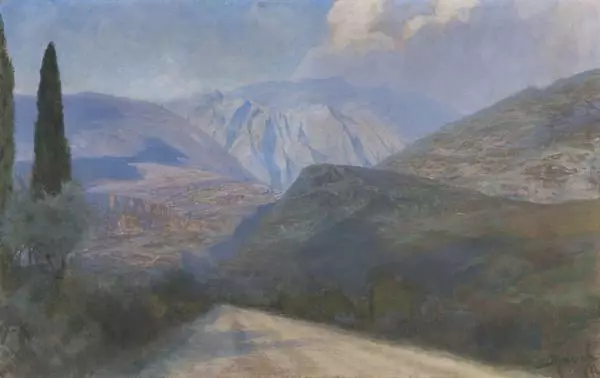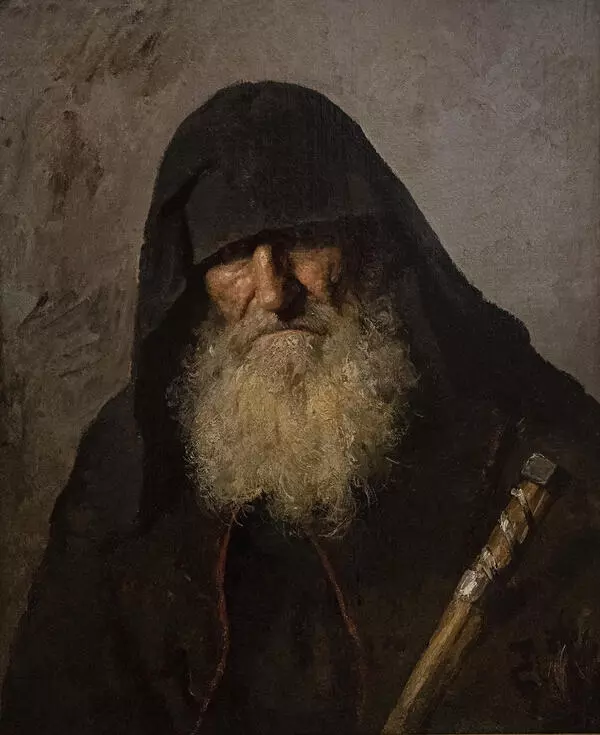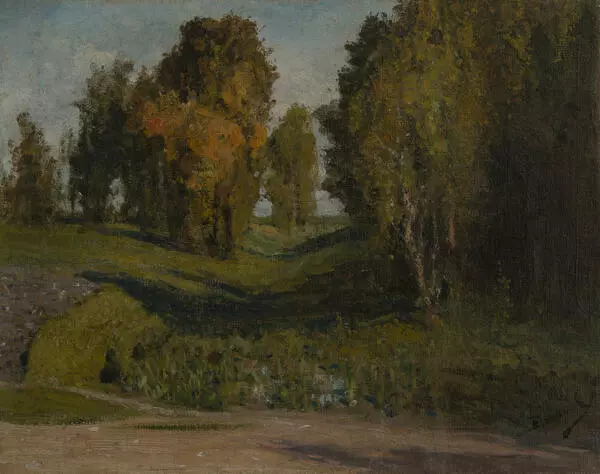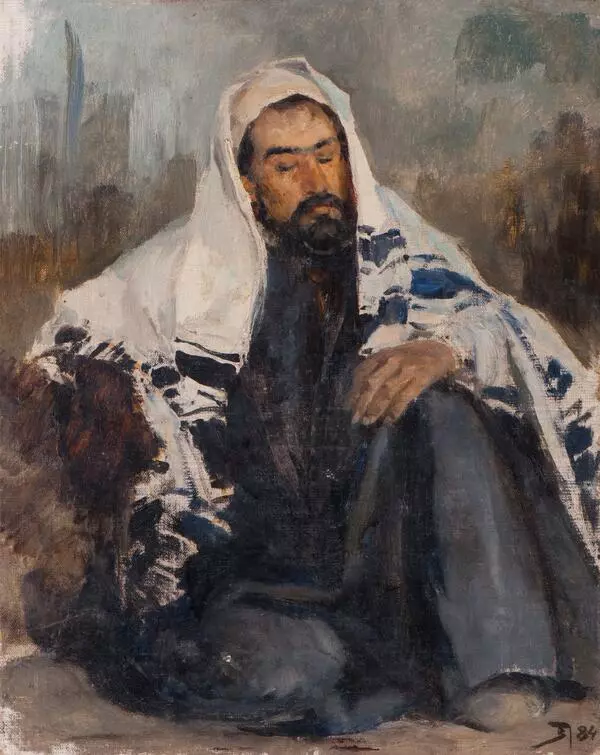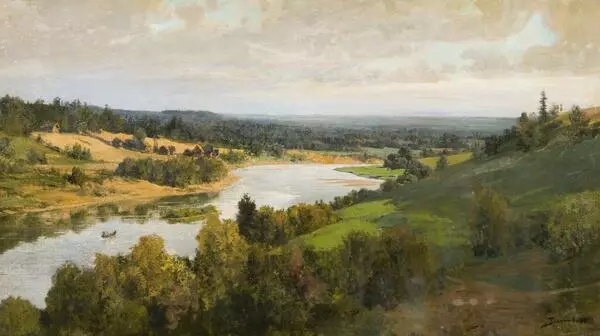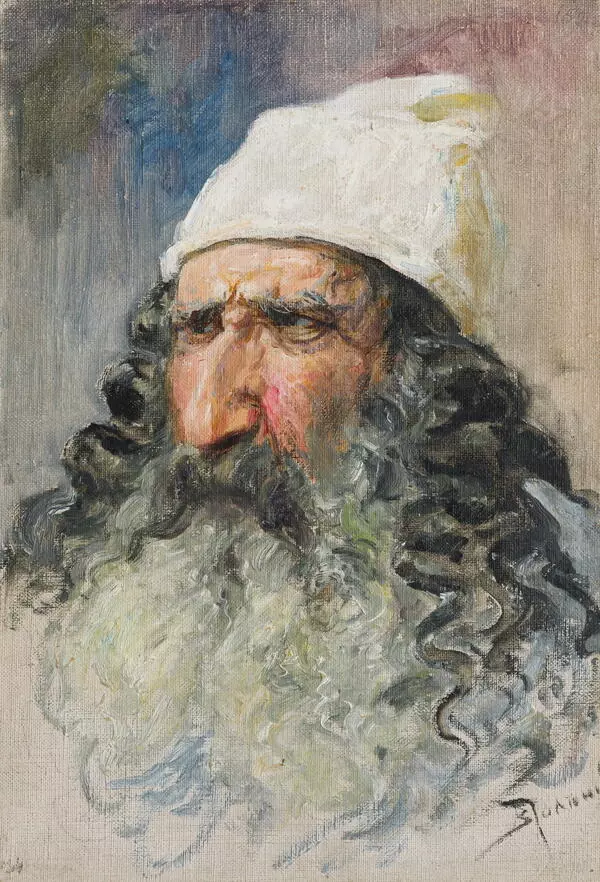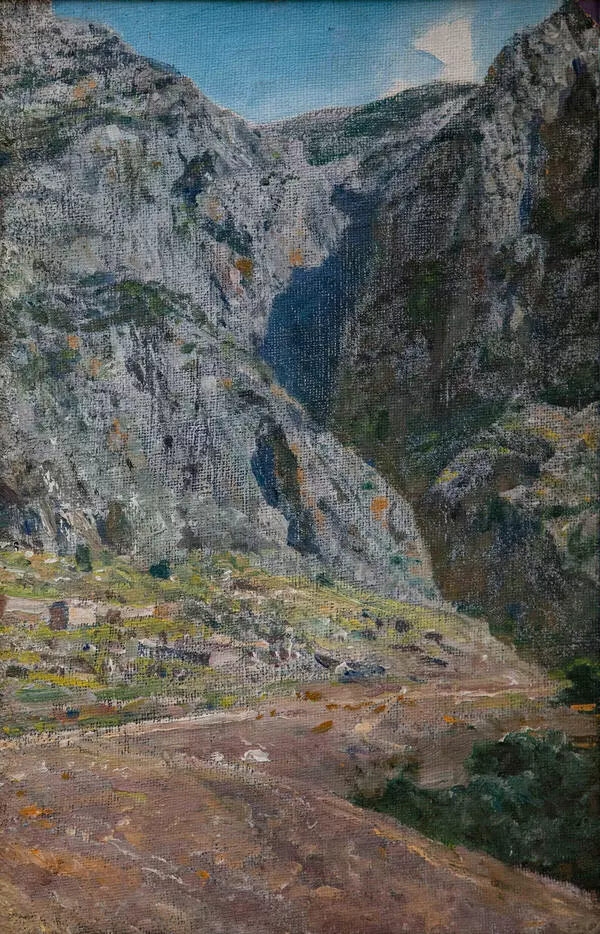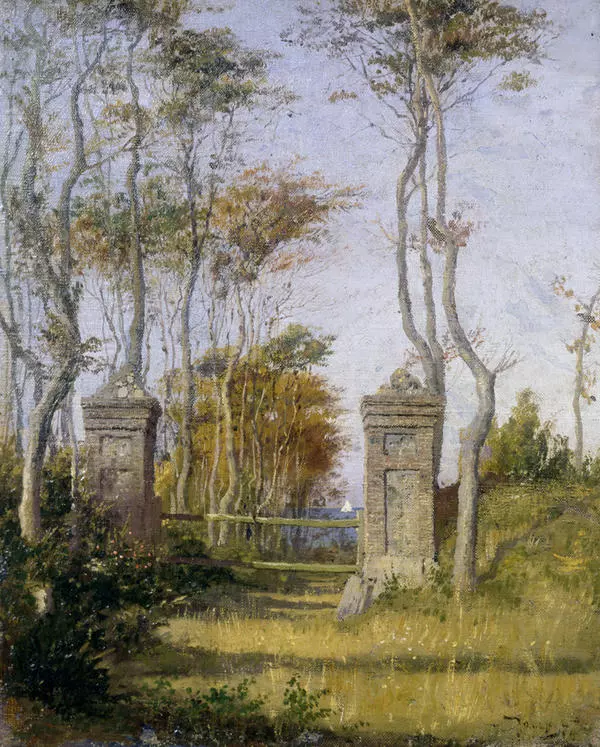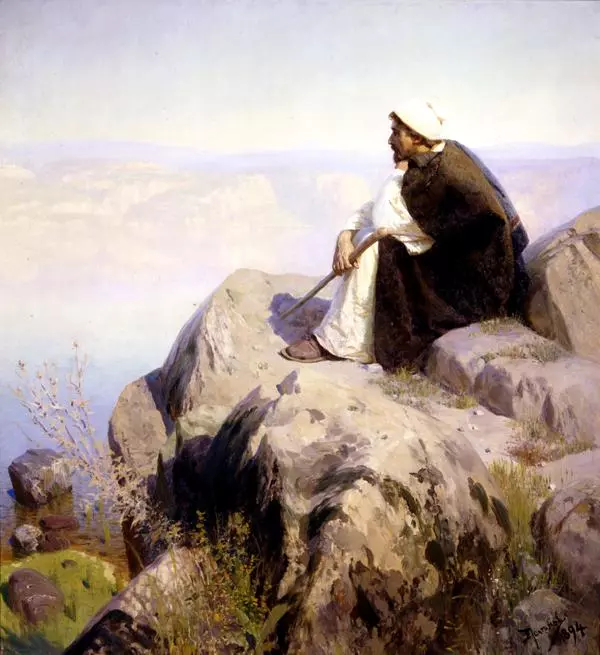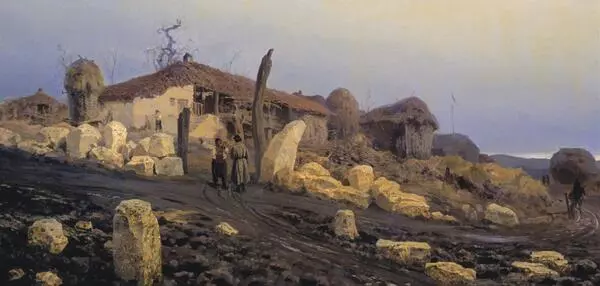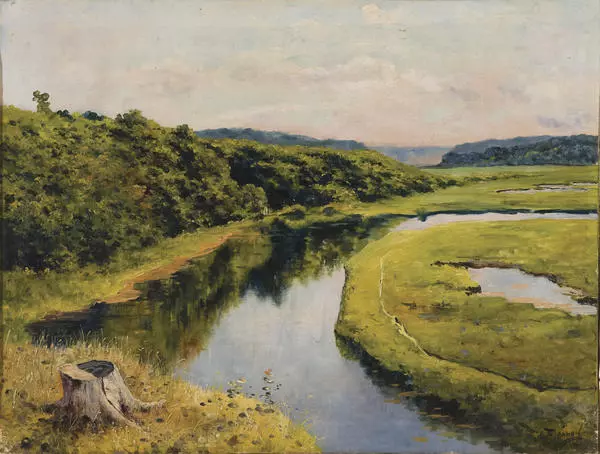Vasily Polenov painted the picture Russian Village in 1889. On it, he presented a typical village in the Russian North. The canvas shows several inns with traditional Russian huts. The artist paid attention to details and carefully painted chimneys, window surrounds, log cabins. The landscape is revived by peasant children playing on the slope.
The author built the composition of the painting Russian Village in such a way that the viewer’s eyes move from the narrow wooden bridge across the river deeper, closer to the houses. Life is raging in the village: in the foreground, on the left, children are playing by the river with a boat, hens are milling behind them. A boy is fishing by himself on the shore, and behind his back on the fence sits a crow-like bird.
Polenov used bright colours to convey the atmosphere of a warm sunny day. Saturated green grass, a blue sky, white lacy clouds, yellow paths and a river bank. The artist created a simple and recognisable image of the Russian village.
The colour and composition of the painting resembled another landscape by Polenov –Moscow Courtyard. He had created it earlier — in 1878.
V. Polenov, Moscow Courtyard, 1878 The artist depicted the view from the window of his Moscow flat near Arbat Street.
He inherited his passion for history and architecture from his archaeologist father. In 1872, the artist went to France on a pensioner trip. It was the name for the scholarship for students of the Academy of Arts. Graduates could go to Europe for several years to improve their skills. The state paid them a scholarship, which was called a “pension”.
During the scholarship, Polenov studied the history and architecture of European cities and sketched ancient medieval castles and Gothic cathedrals.
Vasily Polenov, The Abbey in Redon (1873-1876). The painting depicts the 9th-century monastery in the rays of the setting sun.
During the trip he began to make small landscape sketches. The artist practiced plein air painting (from French “en plein air” — in the open air). He watched nature and sought to convey all its changes on canvas.
In Italy, Polenov honed his skills and returned to Russia. He wrote: “Now I have Russian subjects in my head”. The artist was inspired by Russian architecture and nature, and in his homeland he created the most famous landscapes — Moscow Courtyard, Grandmother’s Garden, Overgrown Pond and Russian Village.
Polenov presented the painting Russian Village to his friend — the artist and collector Alexey Bogolyubov. After his death in 1897, under his will, this work entered the Radishchev Museum.
The author built the composition of the painting Russian Village in such a way that the viewer’s eyes move from the narrow wooden bridge across the river deeper, closer to the houses. Life is raging in the village: in the foreground, on the left, children are playing by the river with a boat, hens are milling behind them. A boy is fishing by himself on the shore, and behind his back on the fence sits a crow-like bird.
Polenov used bright colours to convey the atmosphere of a warm sunny day. Saturated green grass, a blue sky, white lacy clouds, yellow paths and a river bank. The artist created a simple and recognisable image of the Russian village.
The colour and composition of the painting resembled another landscape by Polenov –Moscow Courtyard. He had created it earlier — in 1878.
V. Polenov, Moscow Courtyard, 1878 The artist depicted the view from the window of his Moscow flat near Arbat Street.
He inherited his passion for history and architecture from his archaeologist father. In 1872, the artist went to France on a pensioner trip. It was the name for the scholarship for students of the Academy of Arts. Graduates could go to Europe for several years to improve their skills. The state paid them a scholarship, which was called a “pension”.
During the scholarship, Polenov studied the history and architecture of European cities and sketched ancient medieval castles and Gothic cathedrals.
Vasily Polenov, The Abbey in Redon (1873-1876). The painting depicts the 9th-century monastery in the rays of the setting sun.
During the trip he began to make small landscape sketches. The artist practiced plein air painting (from French “en plein air” — in the open air). He watched nature and sought to convey all its changes on canvas.
In Italy, Polenov honed his skills and returned to Russia. He wrote: “Now I have Russian subjects in my head”. The artist was inspired by Russian architecture and nature, and in his homeland he created the most famous landscapes — Moscow Courtyard, Grandmother’s Garden, Overgrown Pond and Russian Village.
Polenov presented the painting Russian Village to his friend — the artist and collector Alexey Bogolyubov. After his death in 1897, under his will, this work entered the Radishchev Museum.



